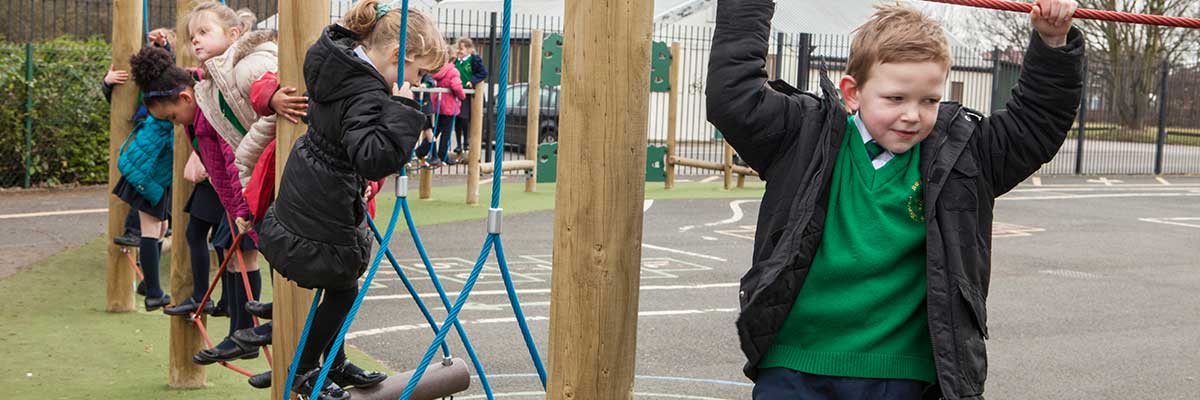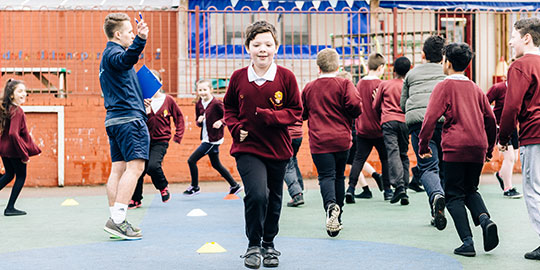
Sport England has released the findings of their Active Lives Children and Young People Survey and while it might not surprise those of us that work around children every day, it does raise some important questions.
Sport England surveyed more than 130,000 children and young people in the academic year 2017/18, with participation figures published in December. Currently, around three million children and young people (43.3%) are active, but a third of children (32.9%) are less active, doing less than 30 minutes of activity a day.
With this in mind the results identified five key points to help us understand children’s attitudes towards sport and physical activity.
The five key findings are:
Physically literate children do twice as much activity. The more of the five elements of physical literacy - enjoyment, confidence, competence, understanding and knowledge - children have, the more active they are.
Enjoyment is the biggest driver of activity levels. Despite the majority of children (68%) understanding that sport and activity is good for them, understanding had the least impact on activity levels.
Children who have all five elements of physically literacy report higher levels of happiness, are more trusting of other children, and report higher levels of resilience (continuing to try if you find something difficult).
Physical literacy decreases with age. As children grow older, they report lower levels of enjoyment, confidence, competence, and understanding. Previous research from Sport England shows that activity levels drop when children reach their teenage years.
The results also reveal important inequalities among certain groups of children which must be tackled:
Girls are less likely to say they enjoy or feel confident about doing sport and physical activity. (58% of boys enjoy it, compared to 43% of girls. 47% of boys feel confident, compared to 31% of girls.) Among children aged 5-7, boys are more likely to love playing sport, while girls are more likely to love being active.
Children from the least affluent families are less likely to enjoy activity than those from the most affluent families, and previous research shows they are also far less likely to be active.
Black children are more physically literate than other ethnic groups – driven by boys, but they're less active than the population as a whole.
Source: https://www.sportengland.org/news-and-features/news/2019/march/21/latest-insights-from-active-lives-children-and-young-people-survey-revealed/
This report (which you can download in full here) comes at a crucial time, given the imminent release of the Government’s School Sport Action plan, its green paper on preventing long-term health conditions, and the plans to use physical activity to integrate communities and reduce childhood obesity.
So, what can we learn from this when we’re thinking about outdoor space development?

The first thing that stood out for us was that enjoyment is the most important thing in getting children active. If children enjoy themselves, they’ll do more. They’ll try out more and test themselves… and they’ll develop physical literacy skills.
The second thing that stood out for us was that the more of the five elements of physical literacy - enjoyment, confidence, competence, understanding and knowledge - children have, the more active they are. This means that children need not only fun outdoors but variety.
Over the years that we’ve been working with schools and settings on their outdoor space development we’ve seen (quite correctly) an increased focus on taking the curriculum and learning outdoors. And we’ve seen more efforts to increase physical and active time, with a commitment to promoting healthy living. But for these to work this must not be at the expense of fun. First and foremost children need to enjoy their outdoor time and the spaces in which they spend it.
At Playforce we believe this means thinking really hard about the way spaces are divided up into zones, providing variety (in terms of different activities) but also pace (quieter spaces, as well as space for imaginative play and active play). You can see this at work in many of our case studies. Here’s an example of our consultants thinking creatively about ways to put active challenges into a play space. It’s not only about running, jumping and climbing. What about developing upper body strength, hand-eye coordination and teamwork? And what about integrating the active trail into a scheme to create zones and a playground that will stimulate both learning and fun across the ages? Read more here…
Although supportive of the findings and recommendations Minister for Sport and Civil Society, Mims Davies voiced a word of caution in relation to the decreasing engagement and fun experienced by children, through activity, as they get older.
“The message is clear - fun and enjoyment is what gets and keeps children active,” she said.
“We know an active child is a happier child but too many are losing the confidence and enjoyment of sporting activities as they get older.
“I want to work with the sector as they play their part in making sport and physical activity both enjoyable and engaging for young people of all abilities and backgrounds.”
Getting the right balance between learning, activity and fun can be a challenge. Now, more than ever, seeking expert advice and support in the development of your outdoor space would seem to make sense. We have over 20 years of experience in helping schools and Early Years settings to get this right. If you’d like to talk to one of our expert consultants about the findings of this report - or you outdoor space and objectives - please get in touch.
Children are choosing to spend their free hours on screens instead of playing outside says API report
At Playforce we’re proud to be members of the Association of Play Industries (API), supporting them with the valuable work they do in raising the profile of play at a government level.
In their latest report, A Movement for Movement, they have shown, for the first time, the strong link between recreational screen time and children’s inactivity. In short, this report proves that children are choosing to spend their free hours on screens instead of playing outside. It reveals that children have never moved so little and points to substantial evidence that screens are a key reason. There appears to be a ‘rapid and dramatic’ change from outdoor to indoor time, with a 50 per cent increase in children’s discretionary screen time (DST) in less than a decade[1]. By the age of eight, the average child will have spent one full year sitting in front of a screen.
The API commissioned Dr Aric Sigman, a leading expert on the effects of screen time on children, to draw together the growing body of evidence showing the effects that less play and more screens are having on children. It is the first time all the relevant scientific and medical data has been collated in this way so that we can more fully understand the impact of discretionary screen time (DST) on play and children’s development.
Armed with this data the API is now campaigning to call upon the government to:
issue an official recommendation of two hours discretionary screen time per day for children
invest in outdoor play provision, especially in deprived areas, to reverse the decline in playgrounds
Key findings
‘A Movement for Movement’ report addresses the relationship between an increasingly screen-based, sedentary, reduced-sleep lifestyle, declining outdoor physical activity, and the implications for children’s physical and mental health outcomes.
The key findings from the report were:
British children have high levels of body fat, Type 2 diabetes, mental illness, sleep deprivation and sedentary behaviour
Interrelationships between physical activity, free play, sedentary behaviour, discretionary screen time (DST), sleep, mental illness, body fat and Type 2 diabetes are being increasingly identified with some being bidirectional -working both ways
Being insufficiently physically active is not the same health risk as being too sedentary - scientists now believe that each have their own distinct health consequences: a child may engage in an acceptable level of physical activity but at the same time spend an inordinate amount of time sitting
British children are part of a global pandemic of low physical activity, having very poor levels in international terms. More than 90% of British children aged 2-4 years now fail to meet even the bare minimum recommendations
Children are 2 – 3 times more physically active when outdoors than when indoors: they move more, sit less and play for longer. Some research has found that unstructured/’free’ play can burn more calories than school and sports programs combined.
Playgrounds can fulfil a unique role in improving children’s levels of physical activity, social interaction, fitness and physical and mental health.
Many health professionals now think that active play, especially in the outdoors, seems to be increasingly replaced by use of electronic screens for entertainment, and consider there to be ‘a serious and widespread problem of excess screen viewing’.
Elevated levels of children’s discretionary screen time (DST) are increasingly associated with negative cardiometabolic, psychosocial and other medical outcomes, including increased body fat, clinical depression, body dissatisfaction and eating pathologies to screen dependency disorders and ADHD.
Screen habits and physical activity habits are cultivated early in a child’s life and last for decades and probably for life. Shaping them in a positive direction from an early stage is therefore imperative.
To read more about A Movement for Movement, you can click on the links below. These include opportunities to sign the campaign’s petition to support a two-hour daily recommendation for children's recreational screen-time.